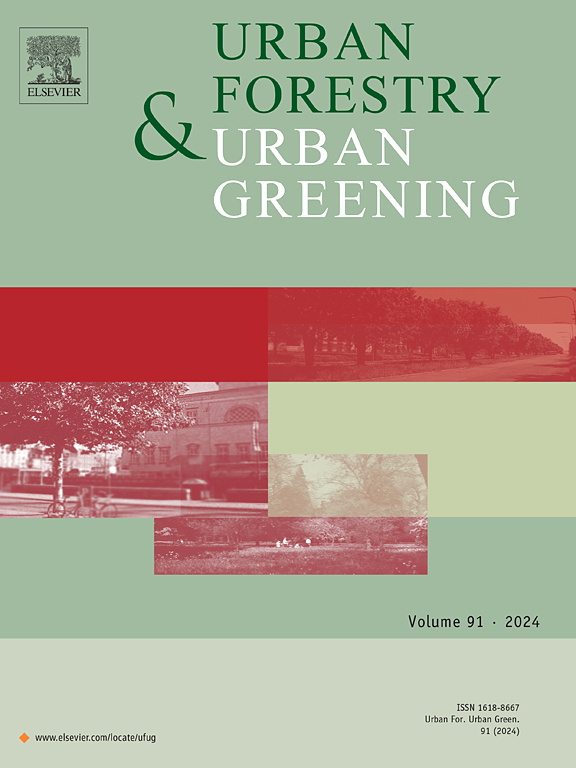Determinants of green space visits in urban areas: The role of personal, situational and physical characteristics. A cross-sectional study in Zurich, Switzerland
IF 6
2区 环境科学与生态学
Q1 ENVIRONMENTAL STUDIES
引用次数: 0
Abstract
The continued growth and densification of urban areas leads to increased road traffic noise exposure for residents and associated health impacts. Green spaces can alleviate these adverse effects by serving as restorative environments and thus promoting well-being. In a cross-sectional study in Zurich, Switzerland, we used an online survey with a participatory mapping approach and explored the associationbetween (i) frequency of individuals' visits to green spaces and their residential environment, individual factors, and the characteristics of green spaces, as well as (ii) number of visitors to specific green spaces and the properties of green spaces. We found that individuals visit green spaces more frequently with increasing road traffic noise annoyance at home (but not the actual noise exposure), more vegetation in their residential areas, greater availability of perceived free time, shorter distances from home to green spaces and with a more eventful perceived soundscape within the green spaces. Further, green spaces attract more visitors with increasing size and when have water bodies. This study showed that, beside visual aspects, soundscape characteristics should be taken into account in urban green space planning.
城市绿地访问的决定因素:个人、环境和物理特征的作用。瑞士苏黎世的一项横断面研究
城市地区的持续增长和密集化导致居民接触到的道路交通噪音增加,并对健康产生相关影响。绿色空间可以作为恢复性环境,从而促进健康,从而缓解这些不利影响。在瑞士苏黎世的一项横断面研究中,我们采用参与式地图方法进行在线调查,探讨了个人访问绿地的频率与其居住环境、个人因素和绿地特征之间的关系,以及特定绿地的访客数量与绿地属性之间的关系。我们发现,随着家中道路交通噪音的增加(而不是实际的噪音暴露),住宅区的植被更多,感知到的空闲时间更多,从家到绿地的距离更短,以及在绿地内感知到的更多事性的声景,个人访问绿地的频率更高。此外,随着绿地面积的扩大和水体的增加,吸引了更多的游客。研究表明,在城市绿地规划中,除了考虑视觉因素外,还应考虑声景特征。
本文章由计算机程序翻译,如有差异,请以英文原文为准。
求助全文
约1分钟内获得全文
求助全文
来源期刊

Urban Forestry & Urban Greening
FORESTRY-
CiteScore
11.70
自引率
12.50%
发文量
289
审稿时长
70 days
期刊介绍:
Urban Forestry and Urban Greening is a refereed, international journal aimed at presenting high-quality research with urban and peri-urban woody and non-woody vegetation and its use, planning, design, establishment and management as its main topics. Urban Forestry and Urban Greening concentrates on all tree-dominated (as joint together in the urban forest) as well as other green resources in and around urban areas, such as woodlands, public and private urban parks and gardens, urban nature areas, street tree and square plantations, botanical gardens and cemeteries.
The journal welcomes basic and applied research papers, as well as review papers and short communications. Contributions should focus on one or more of the following aspects:
-Form and functions of urban forests and other vegetation, including aspects of urban ecology.
-Policy-making, planning and design related to urban forests and other vegetation.
-Selection and establishment of tree resources and other vegetation for urban environments.
-Management of urban forests and other vegetation.
Original contributions of a high academic standard are invited from a wide range of disciplines and fields, including forestry, biology, horticulture, arboriculture, landscape ecology, pathology, soil science, hydrology, landscape architecture, landscape planning, urban planning and design, economics, sociology, environmental psychology, public health, and education.
 求助内容:
求助内容: 应助结果提醒方式:
应助结果提醒方式:


